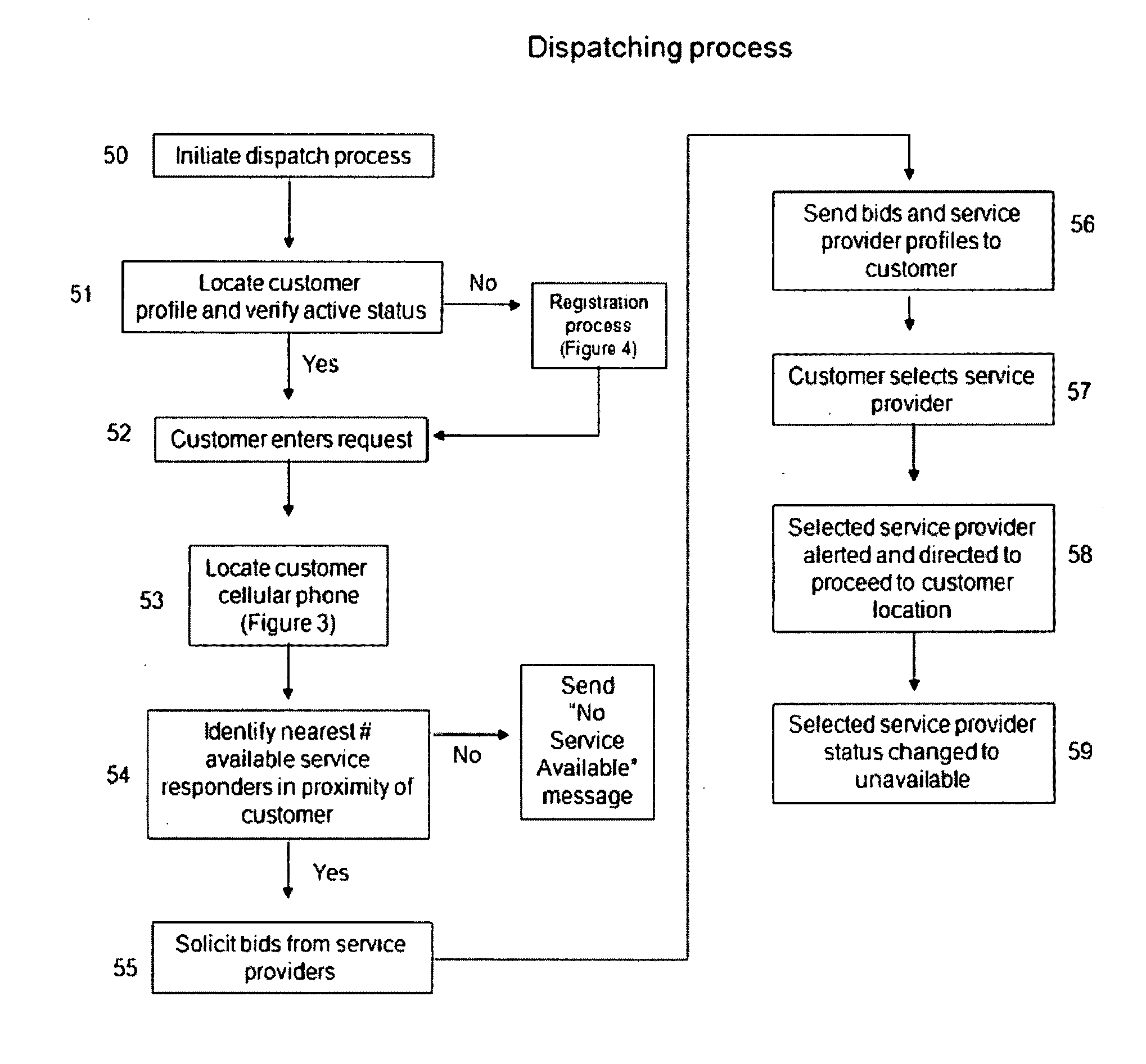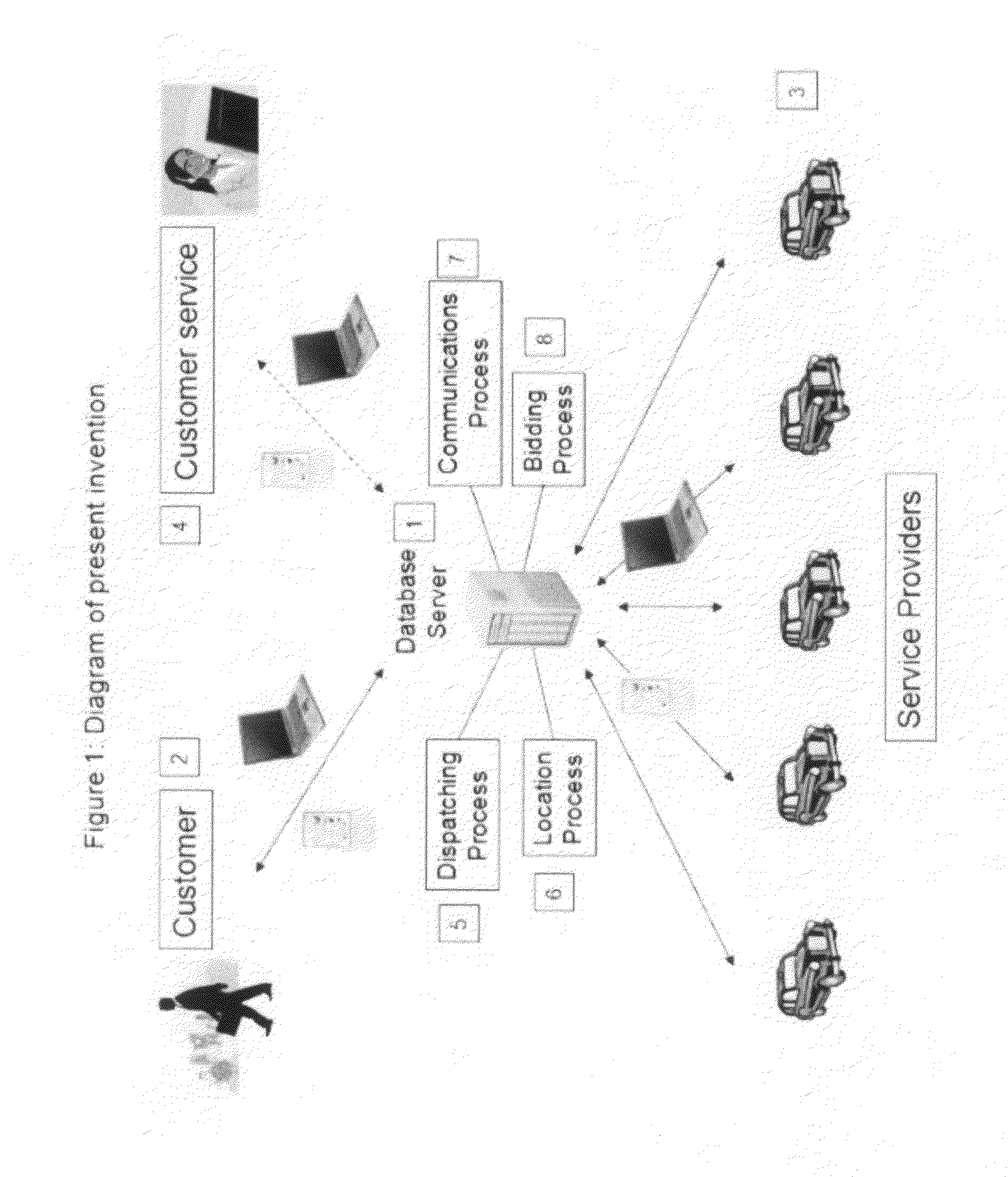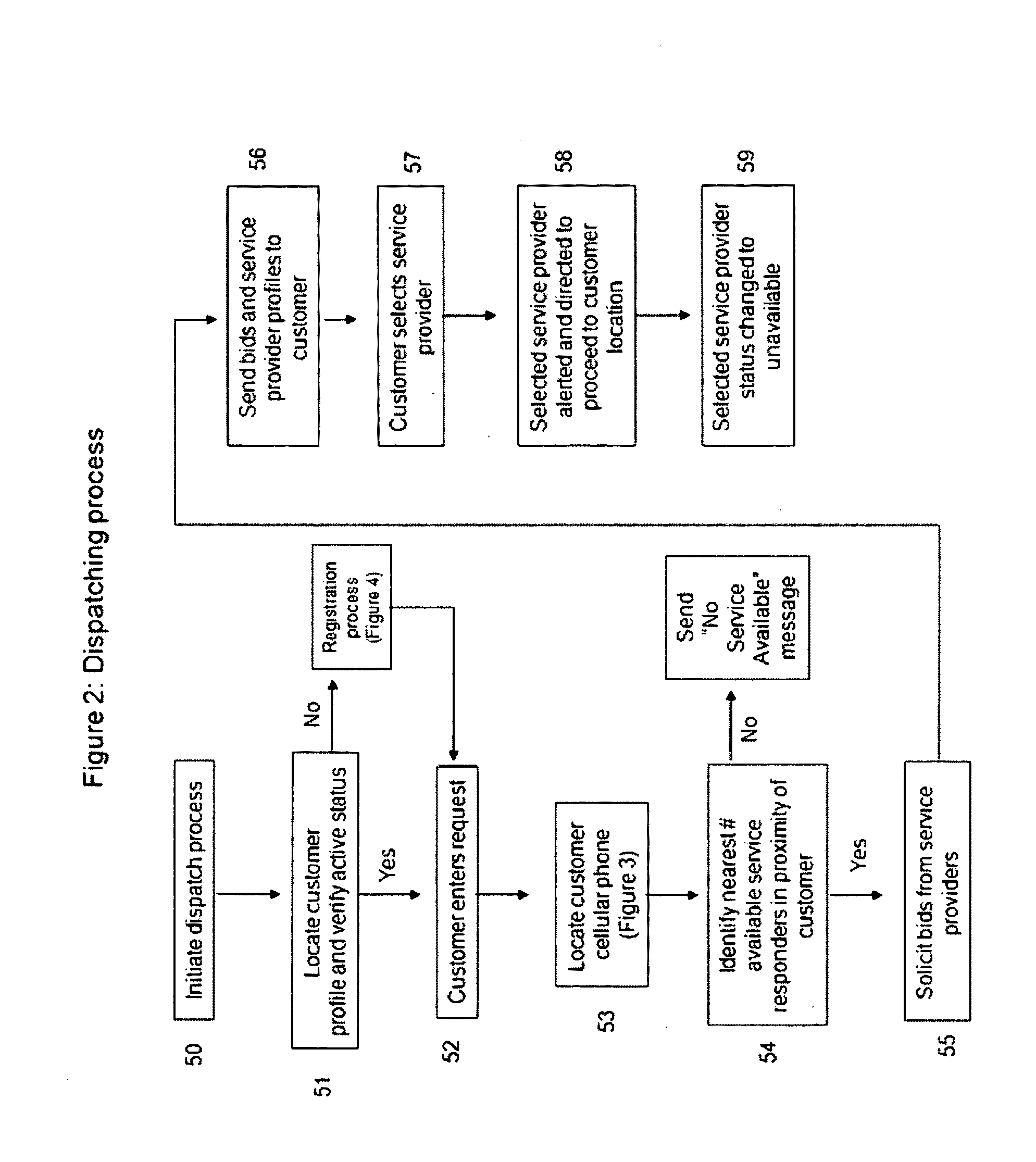Consumer initiated, service provider direct dispatching system
a service provider and dispatching system technology, applied in the direction of navigation instruments, instruments, process and machine control, etc., can solve the problems of increasing the cost of the driver, reducing his profitability, and the availability of dispatching systems that do not permit drivers to choose their own fares, etc., to achieve complete transparency, low cost, and high degree of certainty
- Summary
- Abstract
- Description
- Claims
- Application Information
AI Technical Summary
Benefits of technology
Problems solved by technology
Method used
Image
Examples
Embodiment Construction
[0033]Referring to FIG. 1, an example of a Consumer initiated service provider direct dispatching system as described in the background and summary above, is a system for the coordination of service providers to respond to needed service requests. Specifically, the example system includes a database server (1) for storing records indicating requested services, user profiles and associated information. This database can be populated by various sources, such as, consumers (2) and service providers (3).
[0034]Service request maybe made a variety of ways. For example, consumers and service providers can access and update their account through their cellular phone or over the internet.
[0035]In known dispatching systems described in the background of this application, dispatchers enter requests into the dispatching system, dispatch the service providers or oversee an automatic dispatching process. For example, Smith et al. employ human dispatchers to enter service requests or allow “contra...
PUM
 Login to View More
Login to View More Abstract
Description
Claims
Application Information
 Login to View More
Login to View More - R&D
- Intellectual Property
- Life Sciences
- Materials
- Tech Scout
- Unparalleled Data Quality
- Higher Quality Content
- 60% Fewer Hallucinations
Browse by: Latest US Patents, China's latest patents, Technical Efficacy Thesaurus, Application Domain, Technology Topic, Popular Technical Reports.
© 2025 PatSnap. All rights reserved.Legal|Privacy policy|Modern Slavery Act Transparency Statement|Sitemap|About US| Contact US: help@patsnap.com



